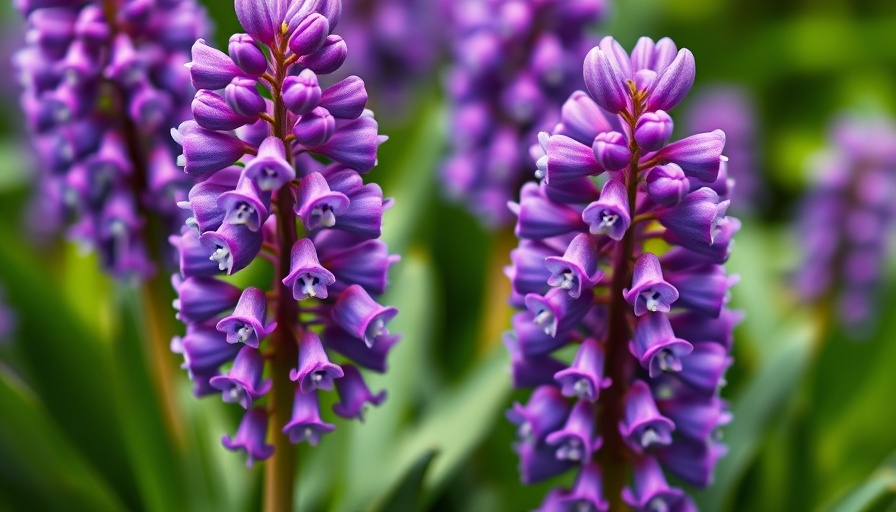
Understanding Grape Hyacinth Care Post-Bloom
Spring’s vibrant hues are often heralded by the beautiful blooms of grape hyacinth (Muscari spp.), a hardy flowering bulb that brings joy to any garden. However, as their lovely flowers begin to fade, many gardeners may wonder how best to care for these understated gems in their landscapes. Here’s a comprehensive guide to what you should do after the blossoms have covered your garden in color and how to help them thrive for years to come.
Water Wisely: Reducing Your Grape Hyacinth’s Need for Moisture
Once your grape hyacinth flowers have finished blooming, they require significantly less water as they transition into their dormancy period. It’s important to allow the top two or three inches of soil to dry out before you water again. This is because the plant’s energy demands diminish after flowering. Wait until the foliage has died back before neglecting to water entirely; this indicates that the plant has stored enough energy for the next growth cycle.
For added assurance, test the soil moisture with your finger or use a moisture meter if your soil is particularly dense. This will help ensure you don’t overwater, which can lead to bulb rot and other issues.
Fertilizing for Future Blooms: The Role of Nutrients
An effective way to boost the health and future blooms of your grape hyacinths is through proper fertilization. Once the flowers fade, consider adding bone meal around the base of the plants. Bone meal is a natural source of phosphorus, which is essential for flowering plants, as it promotes healthy blooms. This organic fertilizer typically has an NPK ratio of around 3-15-0, providing the necessary nutrients to rejuvenate your plants.
Customizing your fertilization strategy based on your soil composition can lead to optimum performance. For instance, if your garden soil already has sufficient nitrogen and potassium, a phosphorus-focused food may be ideal, enhancing flowering without overwhelming the plant with unnecessary nutrients.
Pruning: Tidying Up for Plant Health
After flowering, removing spent blooms is not only a great way to tidy up the garden but also beneficial for the plant’s health. This practice, called deadheading, can help prevent the plant from allocating energy to seed production, allowing it to redirect energy back into the bulb for robust blooming in the following seasons.
While grape hyacinths are relatively low maintenance, taking the time to prune can result in more impressive displays of color in future springs. Likewise, if the foliage becomes too ragged or yellowing, removing the outer leaves can also help the plant concentrate its efforts into healthy growth.
Grapes in Containers: Indoor Grape Hyacinth Care
If you’ve decided to grow grape hyacinths in containers, caring for them post-bloom is similar but has its nuances. Ensure you still have a plan for watering and fertilizing, keeping in mind that container plants can dry out faster than garden beds. After blooming, reduce watering frequency and use a balanced, diluted fertilizer to keep the bulbs nourished.
Container-grown grape hyacinths can also be brought indoors during their dormancy period, allowing you to control the environment. Make sure they remain in a cool, dry place, but don't let them go completely dormant. Consistent care helps maintain their vigor and will yield delightful blooms come spring.
Maintaining Garden Harmony with Grape Hyacinths
Incorporating grape hyacinths into your garden design can create stunning contrasts and vibrant spring colors. However, being mindful of their growth patterns and needs fosters harmony in your landscaping. These bulbs can naturalize beautifully, so planning garden layout with consideration for their eventual spread can lead to a abundant flower garden over time.
They pair wonderfully with other spring flowers, so look into companion planting strategies that make the most of vertical gardening and grouped plantings. Including more diverse plants not only enhances the visual appeal but also supports local wildlife, including bees and butterflies, as they forage for nectar.
Conclusion: Take Action for a Blooming Future
Caring for grape hyacinth post-bloom doesn’t have to be overwhelming. By watering wisely, fertilizing appropriately, and tidying up the plants, you can guarantee they thrive, bringing joy and color to your garden year after year. Remember, a little attention to these beautiful blooms can yield big results in the form of a lush, vibrant flower garden come spring. Start implementing these tips today to ensure your grape hyacinths are primed for their return!
 Add Row
Add Row  Add
Add 




Write A Comment